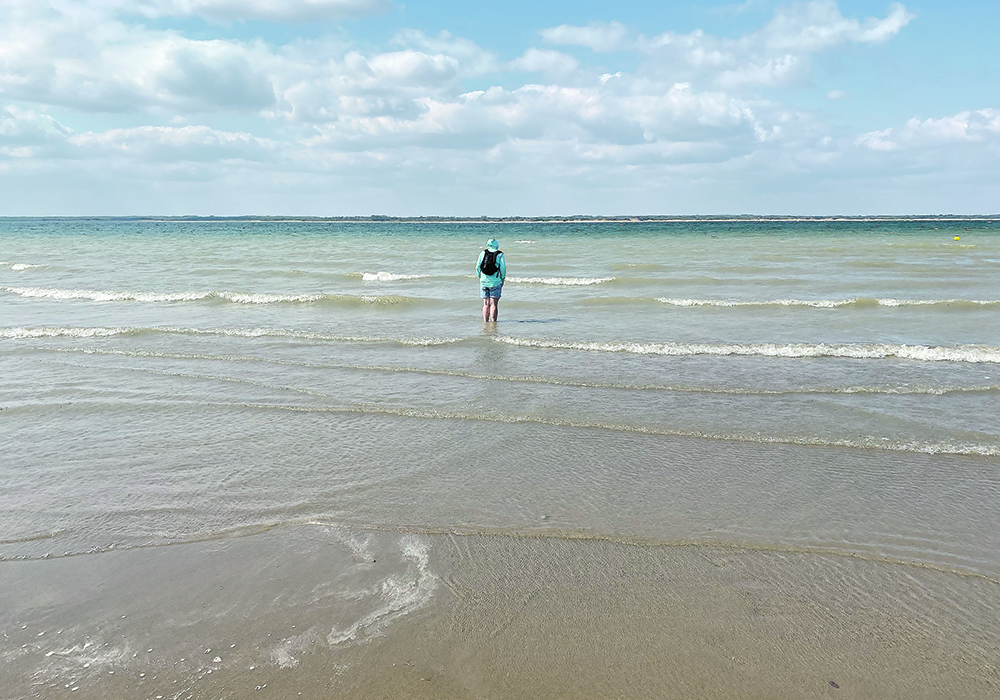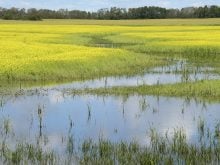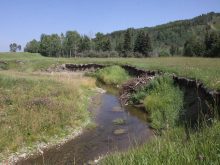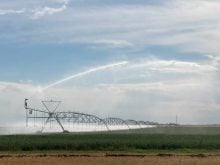REGINA — The head of Saskatchewan’s Water Security Agency says the province is watching Alberta’s preparation for potential water shortages with concern but also with the security of Lake Diefenbaker behind it.
Chief executive officer Shawn Jaques said the situations are different because of the “gem” reservoir created in the 1960s. He said aside from southwestern Saskatchewan, most of the province’s reservoirs are at above-average levels for this time of year.
Related stories in this issue:
- Water Woes weigh on ranchers
- Communities feel pinch as river levels plummet
- Low water levels affect southern Alta. power generation
Read Also

Canadian Food Inspection Agency extends chronic wasting disease control program consultation deadline
Date extended for consultation period of changes to CWD program
Lake Diefenbaker, which provides about 60 percent of the province’s drinking water, is about .14 metres lower than a year ago.
“At this time last year it was sitting at 552.02 metres of water in the lake,” he said Feb. 8.
“As of today it’s 551.88, so we’re almost the same as we were last year.”
Historically, the winter drop in water levels is 4.5 metres; this year the drop will be minimized at one metre.
The agency said the target level for April is 552 metres, which is normally the target for May. The idea is to hit that level sooner to allow for irrigation and recreational use earlier in the season.
Similarly, the May target will be 553 metres, which is normally the June target, with an increase to 555 metres by July 1, depending on mountain runoff.
Reservoir operations this winter were altered to retain as much water as possible after a dry year and lower contributions to the South Saskatchewan River system. Inflows to the lake were 26 percent of normal in 2023 in the absence of any significant rainfall and lower mountain runoff.
“Historically we let out about 240 cubic metres per second out of Lake Diefenbaker through the winter, and the purpose of doing that is to make sure there’s enough room in the reservoir should there be a large inflow of water from the mountains, to make sure that we can capture all of that,” Jaques said.
“But when we saw that the snowpack wasn’t building the way it should be, we lowered that amount to between 60 and 110 cubic metres per second. We’ve really minimized the outflow. It’s really the minimum that’s required to make sure we’re not impacting anybody downstream.”
That outflow meets the province’s commitment to Manitoba because flows from the North Saskatchewan River also count.
Releases through Gardiner Dam flow through SaskPower’s Coteau Creek hydroelectric station to ensure it continues to generate power. The crown corporation produces 186 megawatts there.
Jaques said Alberta and Saskatchewan also differ in how they allocate water licences. Alberta has a first-in-time, first-in-right system, but Saskatchewan discontinued that in 1984.
Legislation allows the WSA to manage water depending on the situation, ensuring that communities get first priority.
“(Communities) have what we call a firm draft licence, meaning they’re guaranteed X amount cubic metres of water. That’s a given,” said Jaques.
It’s likely irrigators would receive less water if there were to be cutbacks, which has happened in the last three years when irrigators in the southwest didn’t get all they wanted.
That won’t happen from Lake Diefenbaker even if inflows drop significantly, he said, because the lake holds so much water.
“Of course we’re watching what happens, but I don’t foresee any issues with having to cut back out of that,” he said.
Still, the WSA is watching particularly those communities that draw their water directly from the river, such as Leader and Cumberland House, which both declared states of emergency last year.
Leader was affected when flows dropped and its intake couldn’t draw water because of its location.
Jaques said staff worked with the Saskatchewan Public Safety Agency to temporarily pump from the middle of the river to fill the community’s reservoirs.
If it stays dry, that could be a concern again.
At Cumberland House, water flows in from a channel that had filled with silt. Combined with low flows, the reservoir couldn’t be filled and temporary pumping had to be used.
“Then WSA drilled some deep wells that we could use as observation wells, but they could also be used to fill that reservoir should they have some of that same issue again,” he said.
Some people are saying inflows into the lake are the lowest ever, but they are the second-lowest in 33 years; 2001 was the lowest in that time period.
Lake levels have been lower in previous decades and typically fluctuate between 550 and 557 metres, according to federal data.
The agency is working with others to plan in case temporary solutions are required in various locations, but Jaques said he is optimistic there could still be more snow and spring rains that help all water sources.
Flows on the North Saskatchewan River were boosted by June rains in 2023, even though inflows on the South Saskatchewan were low.
The WSA is currently planning how it might have to help communities that get their drinking water from surface water sources and how to make sure reservoirs contain enough water. In the southwest, the province inherited numerous reservoirs from Agriculture Canada and is trying to maximize water retention in all of them.
Jaques said there is a system to allow diversion from a full reservoir into another.
Communities that use wells from aquifers receive allocations, and hydrologists determine if those aquifers have enough water.
“To my knowledge there aren’t any concerns because typically when they’re pumping from wells they’re deep water sources and when we hand out licences we make sure that if a community is pumping water from a well that there’s enough water in that aquifer to meet the needs of that community. We have observation wells around the province where we continually monitor the water levels of these aquifers,” said Jaques.
In some cases water utilities deliver the water and may make decisions on use, such as cutting back on watering lawns. SaskWater is one of those utilities, while WSA is responsible to make sure the water is safe and that licences are appropriately allocated.
















